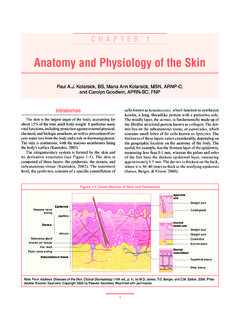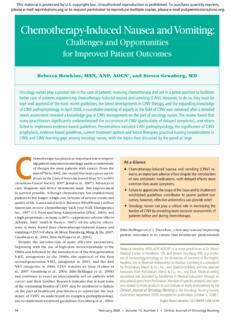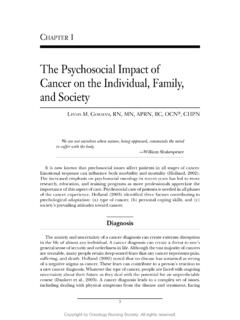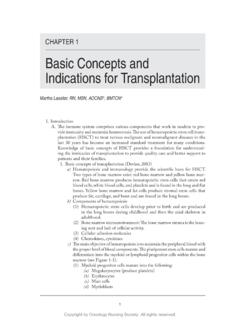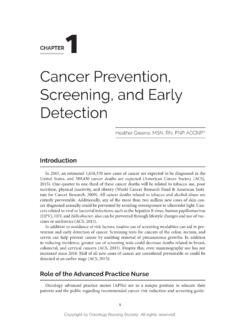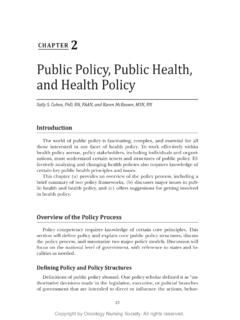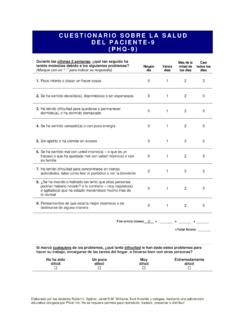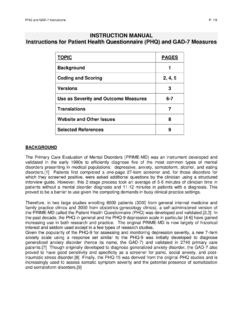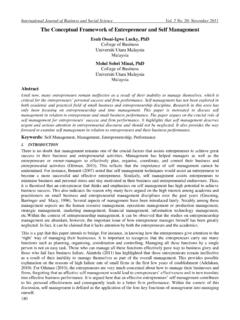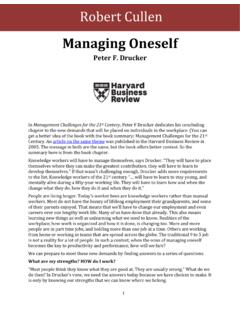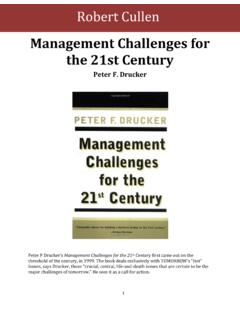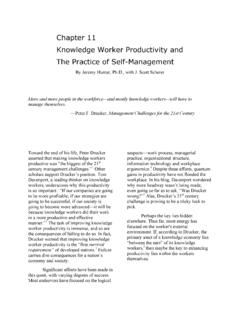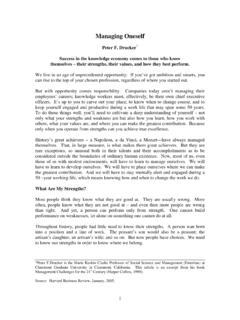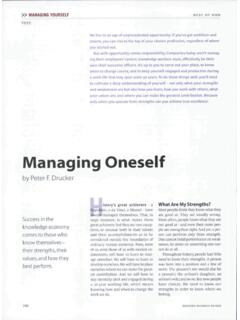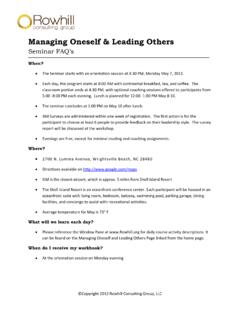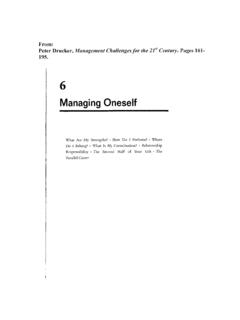Transcription of CHAPTER Inspiring Self and 1 Others to Leadership
1 1 CHAPTER 1 Inspiring self and Others to Leadership Delorese Ambrose, EdD, and Mary Magee Gullatte, PhD, RN, ANP-BC, AOCN , FAANL eadership can be thought of as a capacity to define oneself to Others in a way that clarifies and expands a vision of the future. Edwin Friedman One function of leaders is to empower Others to lead. In the healthcare environ-ment of the future, prudent leaders must inspire and empower themselves and oth-ers. The current healthcare environment offers endless opportunities to innovate, to grow personally, and to inspire Leadership excellence.
2 Health care as a system is in continuous transition. With each change come new stressors and complexities to manage. Changing expectations, staffing shortages, and the challenges of managing care, costs, access, safety, and quality require Leadership that is increasingly adept as the healthcare industry redefines itself for the future. Across the continuum of health care, Leadership responsibilities are compounded by the need to juggle multiple priorities, work long hours, balance work and home life, maintain personal and staff morale, mediate conflicts, influence policies, keep abreast of the latest information and technology, and inspire Others to lead.
3 The primary Leadership challenge in health care amidst the changes is to provide access to safe, reliable, cost-comparative, quality care in a climate of uncertainty and com-plex new have chosen to lead and manage Others in this healthcare environment. You will need to be highly skilled, motivated, and committed to your field and profession. You must develop a sophisticated understanding of the business aspects of medicine, expertise in human relations, and an ability to create a motivating and trusting envi-ronment with integrity and heart for yourself and Others .
4 You must be dedicated to lifelong learning and clinical competence because skills and technology become rap-idly obsolete, and in your role as manager, you will do best if you model the excellence you seek from Others . You also must cultivate personal values such as integrity, cour-age, and a caring of the human spirit. But this is not the end. To be most effective, you need to develop a keen awareness of yourself as an Inspiring and servant leader. With this in mind, this CHAPTER discusses what nurse leaders ( , managers, ad-ministrators, clinical directors, other healthcare executives) can do to inspire them-selves and Others to Leadership .
5 Throughout the text you will gain practical tips relat-ed to self -mastery, managerial and moral courage, and interpersonal relations while exploring what it means to manage and lead from the inside out. The CHAPTER is or-ganized into two sections. 2 Nursing Management: Principles and Practice, Second EditionThe first section, Empowering self : The Journey Inward, will Review the relationships among managing, leading, and the use of self to influ-ence and inspire people to achieve organizational outcomes. Define what values are and examine how personal values shape individual charac-ter, perceived trustworthiness, and behavioral second section, Leading and Directing Others : Putting Character Into Ac-tion, will Explore three dimensions of character development (personal mastery, manage-rial courage, and interpersonal relations) as pathways to exemplary Leadership .
6 Offer guidelines for managing oneself in each of these areas in order to lead oth-ers more self : The Journey InwardLeading, the Inward JourneyManagement is the art and science of executing or getting goals accomplished through people. The differences between Leadership and management are often blended by a fine distinction. McCrimmon (2010) simplified the distinction: man-agers execute, while leaders direct. Successful managers are skilled at planning, or-ganizing, monitoring, supervising, and coordinating people and activities. On the other hand, they also are skilled at Leadership thinking strategically, challenging the status quo, envisioning future direction, and Inspiring , coaching, and empower-ing people so that they want to go in that direction.
7 For example, nurse managers and executives, in their respective roles, each have different organizational responsibilities. Yet both must plan, organize, handle staff-ing and staff assignments, set performance goals, oversee the activities of Others , monitor the quality of patient care, and allocate financial and technologic resourc-es appropriately. They must create a stable, efficient, well-run organization. This re-quires managerial expertise. The nurse manager and the nurse director also must be agents of change. They must demonstrate the courage needed to innovate and transform the organization in ways that will ensure clinical or professional excellence.
8 They must develop a work culture and climate that support high-performing teams and cultivate in people a willingness to change, innovate, and embrace core organizational values that sup-port quality service. This requires Leadership abilities. Discussions about management and Leadership tend to focus on the wise and ef-ficient use of resources, such as people, time, money, and technology, to reach orga-nizational goals. What often is overlooked is the use of self to achieve closer look at the role of Leadership reveals that it is impossible to talk about leading Others without considering how you manage and deploy yourself in that role.
9 Leadership is a process of persuasion and example by which one inspires and engages Others in achieving a shared vision (Kouzes & Posner, 1999). Kouzes and Posner (2007) identified the practices and commitments of exemplary lead-ers (see Table 1-1). CHAPTER 1. Inspiring self and Others to Leadership 3 Table 1-1. Five Practices and Ten Commitments of LeadershipPracticesCommitmentsModel the Way 1. Clarify values by finding your voice and affirming shared ideals. 2. Set the example by aligning actions with shared a Shared Vision 3.
10 Envision the future by imagining exciting and ennobling possibilities. 4. Enlist Others in a common vision by appealing to shared aspirations. Challenge the Process 5. Search for opportunities by seizing the initiative and by looking out-ward for innovative ways to improve. 6. Experiment and take risks by constantly generating small wins and learning from experiment. Enable Others to Act 7. Foster collaboration by building trust and facilitating relationships. 8. Strengthen Others by increasing self -determination and developing competence.
